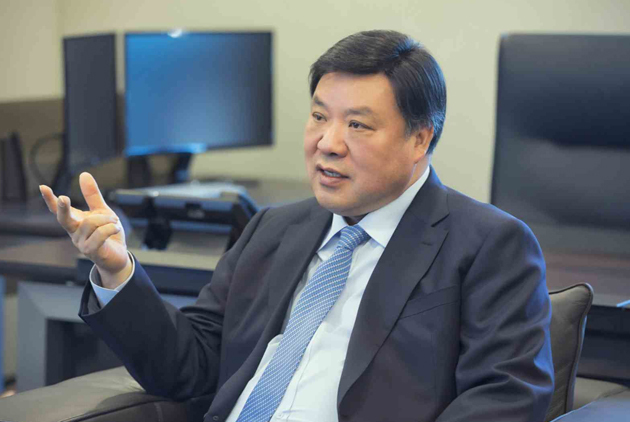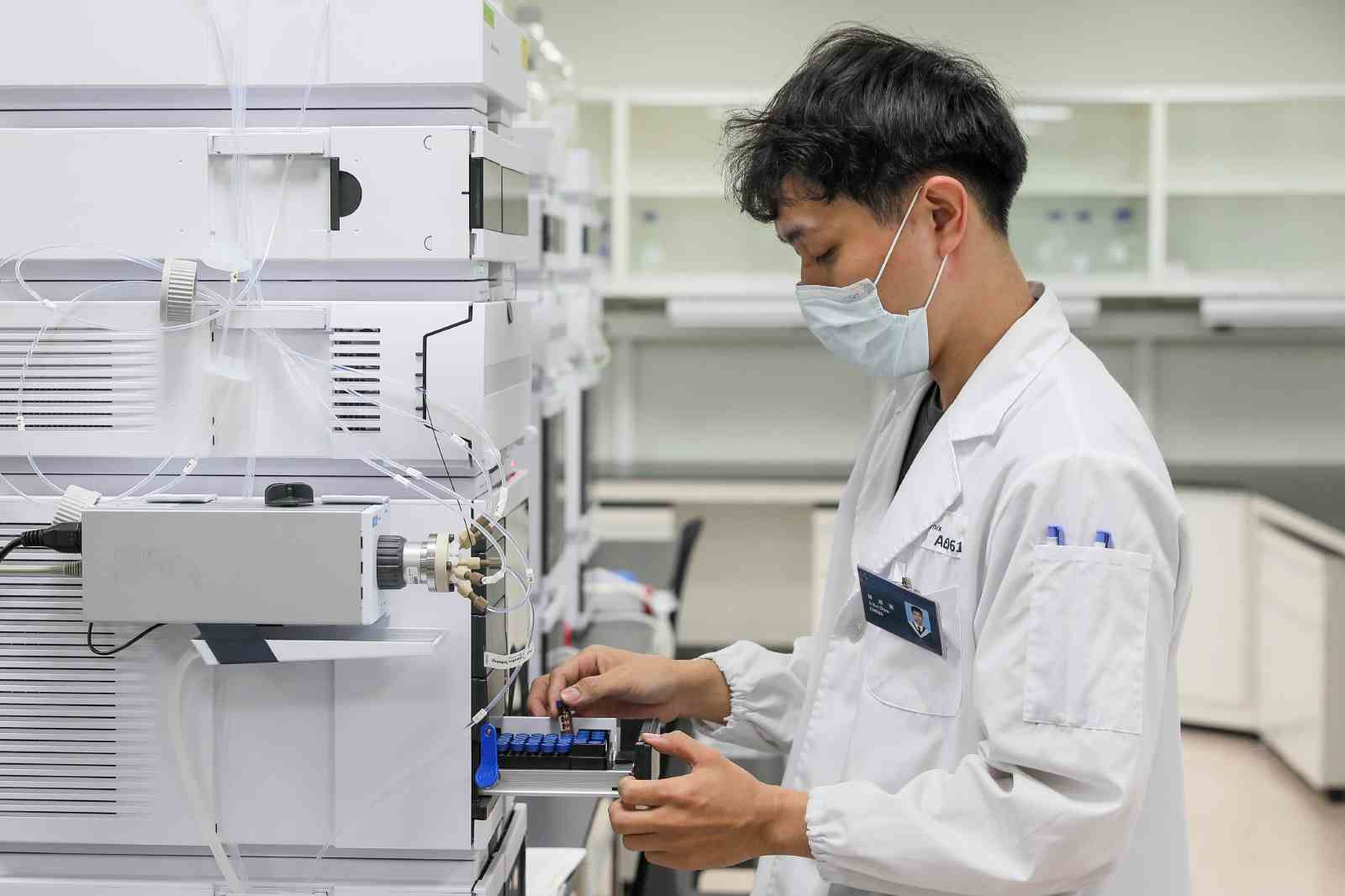The Hard Truth About How Korean Biotech Surpassed Taiwan

Source:Celltrion
The Korean biotech giant Celltrion is proof that from humble beginnings, big things may one day come. Its founder deserves a chunk of the credit, but the Korean government also did much to accelerate its success. Taiwan and Korea started out at around the same time; how has Korea left Taiwan in the dust? Here are some of the things that Korea did right, as well as Taiwan’s missed opportunities.
Views
The Hard Truth About How Korean Biotech Surpassed Taiwan
By Sydney Peng, Elaine Huang, and Liang-rong ChenFrom CommonWealth Magazine (vol. 709 )
It took three grueling years, but in 2005, Celltrion finally got its first order: 200 million Korean won to produce the stock solution of a rheumatoid arthritis treatment for Bristol-Myers Squibb. In 2008, Celltrion reached a new milestone when it signed a contract with the French pharmaceutical company Sanofi-Aventis to make antibody drugs.
The OEM and ODM strategy brought in a great deal of revenue. Celltrion went public that year and collected more capital to invest in the development of biosimilar products.
The First Factor of Success: Grabbing the Golden Opportunity
Biosimilar drugs, also known as biogenerics, were the window of opportunity that Korea used to enter the biotech business.
It was a brand new industry. The products are a few select kinds of extremely expensive biological agents, a single unit of which may cost up to NT$10,000. Five or six years ago, their patents had begun to expire.
Keun Lee, Professor of Economics at Seoul National University, told CommonWealth Magazine that Korea’s strategy was to enter “long product cycle” industries such as pharmaceuticals and medical equipment. The reason is “short product cycle” industries like information technology are easily overtaken and replaced by Chinese enterprises.
Beginning with OEM and ODM orders of biogenerics was “the stepping stone to enter the field of long product cycle industries,” says Lee.
Even if it were a “stepping stone”, it is not so easy to gain a foothold.
Taiwan’s biggest and most promising biosimilar company is EirGenix. It is literally Taiwan’s “dream team”. The government holds nearly a quarter of its stocks, through entities such as the National Development Fund and Taiwania Capital.
EG12014/EGI014 is a biosimilar drug for breast cancer that was developed by EirGenix. It has already secured a license agreement with Sandoz AG, a Novartis division. It is the first Taiwanese biosimilar drug to be successfully commercialized by a global pharmaceutical company. Its Phase Three clinical trial just wrapped up in March of this year.
Chih-jung Chang, COO of EirGenix, says making biosimilar drugs is much more complex than generic drugs because it involves “very solid reverse engineering”.
For run-of-the-mill generic drugs, one only has to look at the patents and active pharmaceutical ingredients listed by the U.S. Food and Drug Administration (FDA). “But such information is not available for large-molecule treatments (such as biosimilar drugs), so it can’t be done; the molecular complexity is just too high,” says Chang. He recalls that in the early exploratory phase, when they couldn’t get their hands on any sort of literature to help expedite the reverse engineering process, all they could do was buy the drugs themselves and analyze every item one by one.
However, just buying 40 or 50 batches of such drugs from the pharmaceutical giants racked up hundreds of millions of Taiwan dollars in costs.
Chang is the pioneer of biosimilar drugs in Taiwan. In 2005, while attending a conference in the U.S., he first learned about the concept of biosimilar drugs. He brought the idea back home and attempted to develop it in the labs of his old employer: TTY Biopharm. “Celltrion was three or four years ahead of us, but in the beginning they took baby steps, much like we are doing now.”
Currently, EirGenix mainly makes its money through OEM and ODM orders. It is a contract development and manufacturing organization (CDMO) for pharmaceutical companies. The money they make from these orders is used to research biosimilar drugs. This is very close to Celltrion’s model a decade ago.
But a decade is a lot of ground to cover. Celltrion already has multiple drugs in the market. Three of them--Remsima, Truxima, and Herzuma--are already covered under Taiwan’s National Health Insurance. The demand is so high that it is number one among pharmaceutical companies.

(Source: Chien-Tong Wang)
The Second Factor of Success: Government Support Accelerated Growth
It cannot be denied that Celltrion founder Seo Jung-Jin’s unique circumstances and sharp business sense are the main reason why Korea entered the biosimilar drug industry ahead of the rest of the world.
Sang Noh, General Manager of Amgen Korea, thinks the Korean government’s support was also crucial.
“Around 2010, the government began building infrastructure and a system for supporting the long-term development of biotech and healthcare industries,” he says. This included relaxing regulations to speed up the industry’s progress.
It was also in 2010 that Korea’s Ministry of Knowledge Economy (now the Ministry of Trade, Industry and Energy) introduced its strategy to create an export-based industry of biosimilar drugs.
The government vowed to create the world’s first biosimilar drug industry within a decade.
Thirty-five percent of the country’s pharmaceutical research and development budget was poured into this burgeoning industry. Korean pharmaceutical companies began by selling to Latin American and Asian markets before storming the European and North American markets with low-price products.
Then Secretary of Knowledge Economy Choi Kyoung-hwan stressed that “Businesses took the opportunity to target overseas markets. They learned from the harsh lesson of our generic drugs, which were not enough to support an export industry.”
Because public opinion has since turned against chaebols, Professor Keun Lee says Korea’s industry policies for the last ten years have been adjusted accordingly. In the past, the government chose favorites and nurtured them directly. Now, it has focused on building systems and guiding start-up companies toward success. “No more national dream teams,” he says.
This new initiative was greatly beneficial to Seo, who was a middle-aged entrepreneur.
In the summer of 2012, Celltrion’s biosimilar drug Remsima was approved by Korea’s Ministry of Food and Drug Safety (MFDS). It became the world’s first biosimilar monoclonal antibody.
Jaw-Jou Kang, Vice President of National Yang-Ming University and former Director General of Taiwan’s Food & Drug Administration, says the key factor was the Korean MFDS’s willingness to provide in-depth support and help companies pass the approval processes more quickly.
To do this, the MFDS needed to have enough experts on its staff who were able to understand which regulations could be relaxed and which could not. This was a key factor.
Fortunately, the Korean MFDS was an independent incorporated entity. The salaries and benefits of its staff were not restricted by the rules of public office.
They paid good money to hire valuable talent from both domestic and foreign pharmaceutical companies to boost the standards of its approval process.
“In contrast, Taiwan followed the rules rigidly,” says Kang. Taiwan’s Food & Drug Administration became akin to a “cram school” for the private sector. Promising staff members who had completed the two years of mandatory training were quickly lured away by private companies.
The Third Factor of Success: Ignorant, Fearless Game-Changers
EirGenix spent NT$1.6 billion dollars to build a new plant in Hsinchu. The plant opened early last year. Its production line takes up an entire floor. The crowning jewel is the shiny stainless steel fermenting vat located right in the center.
From cell lines at the start of production to cell purification at the end, when both production lines operate at full capacity, their output can go up to 24,000 liters of material. Currently, it is the biggest biotech plant in Taiwan.
But compared to Korea, it’s a drop in the ocean.
Celltrion started out with a 50,000-liter fermenting vat. In 2012, it added another 90,000 liters to its capacity. The third plant they are currently planning to build can produce 200,000 liters of material every year.
Such magnitude of scale makes it easier for Korean drugs to be approved by the European Medicines Agency (EMA) and U.S. FDA for clinical trials and commercialization. In contrast, smaller pharmaceutical plants may have floundered because they got marketing authorization during the research and development phase; when they tried to scale up production and go to market, they found that doing so would upset the delicate balance of their formulas, and the quality of their drugs would become unstable as a result.
Even so, why is it that even a Taiwanese company with the government’s support has opted to expand step by step, while Celltrion, a private company that initially got no financial support from the Korean government, was able to build a world-class pharmaceutical plant from the get-go?
Seo’s entrepreneurship was obviously a major factor. He has a background in the automotive industry, and he has spoken optimistically about how biotech is “simpler” in comparison. “A human body has not so many organs, while a car has 3,000 components,” he once told Financial Times.
“The ignorant knows no fear.” This is what many game-changers have in common.
They flout the conventions and unspoken rules of established industries. In the beginning, they are laughed at. But eventually, they become the agent of change. Tesla founder Elon Musk is another such game-changer.
When he first started out, Seo could not find any chaebols willing to throw money at this unproven industry. He decided to go at it himself, and he was determined to become the best in the world.
“That’s the classic Korean method: dive in head-first, even if you are not quite sure what’s ahead,” explains Sang Noh. “Samsung also achieved success in this way.”
Another reason Seo was able to go big was because he had the support of the Korean capital market.
In August of 2008, two months after Celltrion went public, the global financial crisis struck. Luckily, the government was able to trot out biogeneric-related policies in time to lend a helping hand. Even before Celltrion got its marketing authorization in 2012, its stock prices had nearly tripled. Seo had all the money he needed to invest in research and development and conduct clinical trials.
Now that everyone is hopping on the bandwagon, does Taiwan still stand a chance?
The thing is, although biosimilar drugs can be seen as a type of generic drugs, their clinical trials are extremely complicated, as well as very costly.
Chih-jung Chang of EirGenix says in the process of developing a biosimilar drug for breast cancer, the company spent two billion NT dollars conducting 807 clinical trials around the world. “Very few Taiwanese companies are willing to spend this kind of money,” he says.
Yes, the “window of opportunity” is fleeting.
Countries like India, China, and Japan are vying to develop their own biosimilar industries. Even the Western pharmaceutical giants that invented the original drugs are interested. Amgen, the world’s second-largest biopharmaceutical company, is also developing its own biogenerics.
Does Taiwan still stand a chance?
Joyce Lee, General Manager of Amgen Taiwan, says the biopharmaceutical industry is actually still in its nascent stage. In the future, production costs will come down, demand around the world will grow exponentially, and there will be more biosimilar drugs as more patents expire.
“Taiwan still has an advantage. If we are determined to catch up, we still have a chance,” she says. “Taiwan’s biotech industry should grab the opportunity while we still can.”
Have you read?
♦ Google Ups Investment in Taiwan, Highlights Risks
♦ What Korea Is Doing Right… and Taiwan Is Not
♦ Taiwan Needs More than TSMC
Translated by Jack Chou
Edited by TC Lin
Uploaded by Penny Chiang






